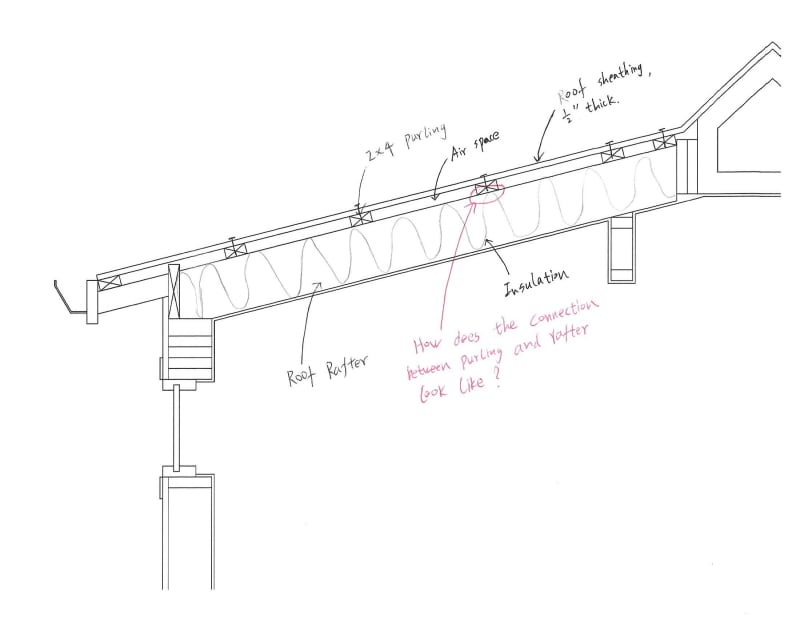AlexWong122
Structural
- Apr 23, 2018
- 28
Hi All,
I am new to wood frame design.
It seems to be a common practice in my area (and I also read some threads in this forum talking about this design) that for a flat roof , people are putting a 2x4 purling on top of roof rafter for cross ventilation purpose. The roof sheathing is then put on top of the purling, acting as a diaphragm. I have a question about this design:
As a diaphragm, the roof sheathing will be nail to the framing member for the complete load path. In this case, the sheathing is nailed to the purling, and the purling is nailed to the rafter. Let's say I need a diaphragm resistance of 400 lbf/ft, and I can use 0.5" plywood sheathing with 2.5" nail with 4" o.c. to achieve this capacity. However the connection resistance between the purling and rafter seems impossible to achieve that capacity with just nails (because there is only a few contact points (let's say both rafter and purling is spaced 24" o.c.). What is the common way of doing this connection?
Thanks in advance for any inputs.
Alex

I am new to wood frame design.
It seems to be a common practice in my area (and I also read some threads in this forum talking about this design) that for a flat roof , people are putting a 2x4 purling on top of roof rafter for cross ventilation purpose. The roof sheathing is then put on top of the purling, acting as a diaphragm. I have a question about this design:
As a diaphragm, the roof sheathing will be nail to the framing member for the complete load path. In this case, the sheathing is nailed to the purling, and the purling is nailed to the rafter. Let's say I need a diaphragm resistance of 400 lbf/ft, and I can use 0.5" plywood sheathing with 2.5" nail with 4" o.c. to achieve this capacity. However the connection resistance between the purling and rafter seems impossible to achieve that capacity with just nails (because there is only a few contact points (let's say both rafter and purling is spaced 24" o.c.). What is the common way of doing this connection?
Thanks in advance for any inputs.
Alex

